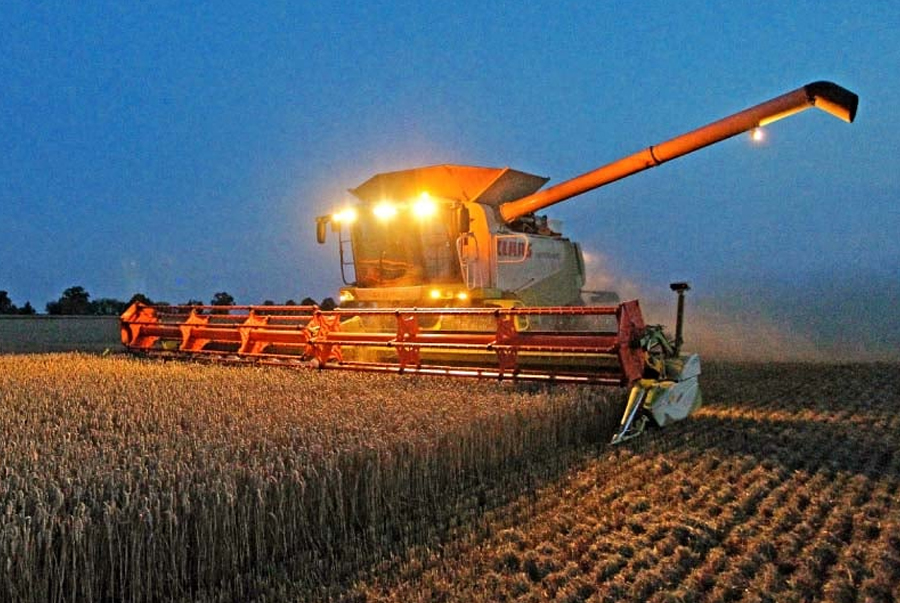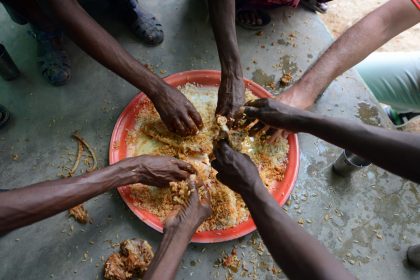Two points that were emphasized in part one of this article explains i) the need to look for alternative strategies that require research: a completely missing factor in Economic survey of Pakistan: 2016-2017 and ii) a new vision to address the challenges we are facing today. Unless we do this, the dream of setting new goals will remain elusive and it will be business as usual.
WHAT TYPE OF RESEARCH DO WE REQUIRE TO SOLVE OUR PROBLEMS?
In an opinion article “A vision for 21st century agricultural research” published on July 13th, 2012 in Front. Plant Sci., 3:157 (https://www.frontiersin.org/articles/10.3389/fpls.2012.00157/full)
Richard A Jorgensen emphasized that:
“Agricultural research in most of the world is based on old models that no longer serve us well in the twenty-first century as arable land diminishes, populations increase, and climate is changing. To address these challenges, we need a new vision that can radically change agricultural research to address the challenges the world is facing today”
To face such challenging scenario, we must:
i. Thoroughly understand the application and significance of basic and applied research in agricultural equally: a concept that we do not and cannot practice in Pakistan,
ii. Identify the areas of overlap in both the research domains,
iii. Emphasize application of strong but problem-solving basic research against the prevailing practice of showing reluctance to do this and considering the basic researchers, an alien to the agriculture system,
iv. Utilize applied science for understanding major agricultural concepts/goals, and for solving national and international problems,
v. Develop new scientific/research cultures and scientific communities according to the need of the system and not to save the existing traditions,
vi. Recognize the cultures/circumstances in which basic and applied research is being done in the country and bridge the self-proclaimed boundaries between them to evolve a new culture that understand the new realities and work accordingly.
Are we willing to do this? The answer is NO because it requires will, vision, efforts, capability and capacity where as we lack all the five. We, in Pakistan, are allergic to the use of term “Basic research” in agriculture. We only believe in developing varieties due largely to the work of field attendants and daily wagers. Agriculture in Pakistan is largely based on “Agree” without any culture of science
HOW TO PROCEED? AND IN WHICH DIRECTION?
The first and foremost is cooperation, coordination and sharing the research done by intra- and inter organization within and between government agencies of the country in the areas of both basic and applied research. Promote cooperation on common goals and mutual benefits.
We cannot think of doing this in Pakistan. Two groups working in a research institution or even in a research division hardly share their research with each other, sharing between the organizations notwithstanding. Whether their idiosyncrasies, insecurity and/or fear of being exposed stop them doing this is not known.
The ideal way of solving this problem is that: a thorough periodical review be conducted in all research disciplines of an organization or as a meter of fact by all the organizations under the supervision of their respective heads and the results be shared with each other. The consensus report should be sent to coordinating organization (if any) to disseminate the results to all the Institutions involved in agriculture discipline. Pakistan Agriculture Research Council (PARC) was established with one of this primary goal. She did it for some time quite amicably but then, she establishes National Agriculture Research Center (NARC) under her umbrella to conduct her own research and PARC role confined only to conduct National Uniform Yield Trials of crop varieties developed by the Provinces. Even though, PARC is an agriculture research center (by name) the research component has long been pushed to NARC or the projects funded by PARC which some of the lucky can, while majority cannot get for reason(s) best known to PARC.
One of the basic reasons for writing these articles is to sum up all these aspects and other likes of this and to put them on the internet for the information of everyone interested to modify his/her research program to made it suitable for the requirement of the 21st century. It is a free service provided by AM AgriCon (SMC-PVT) Limited to young researchers and agriculturist so that they can select what they think is right for their career.
THE WAY FORWARD
To make the agriculture research compatible with the existing situation, it is imperative that: strong meaningful basic research be done in all critical areas of agriculture which must be clearly defined, prioritized and supported,
Study of current agricultural ecosystems with prevailing and emerging (under the influence of environment change) population and communities (both natural and agricultural) and ecosystem related pathogens, pest, and pollinators and how they are interacting with existing cropping pattern is a must in order to predict the future models of plant growth and their responses to the environment.
Equally important is the study of environment and its interaction between earth sciences, hydrology, soil sciences, remote imaging, computer and information sciences, mathematical modeling, and cyber-infrastructure which are the essentials of the twenty-first century agricultural sciences. Some of these disciplines e.g. hydrology, soil science, remote imaging, computer and information sciences are being practiced in various Institutions and Universities (NIAB, UAF, Faisalabad just to mention the names) but most of the agricultural and even basic science researcher do not comprehend their significance in 21st century agriculture. Access to “Metaweb” is not common and largely not known in the country as a shared database in world’s knowledge. Lack of access and/or of understanding is perhaps the major bottle neck.
Applied Sciences must be reorganized to understand important concepts/goals and solving national and international problems related with agricultural sciences, keeping in mind the long-term sustainability (of production system, water availability, ecosystems component, soil quality and associated farm communities), security of energy, food, climate, health and welfare of community with respect of nutrition, food quality and economic vitality. There must be a fine but defined linkage between basic and applied research, research and extension, agriculture and agroforestry, ecology and food industry and between industry and consumers so that the new research groups and domains can emerge from the overlap areas of these fields. It is imperative for the success of this vision that policy makers, funding agencies and head of the research organization support this concept of interaction among these diverse fields and researchers instead of supporting their comfortable zones of working in isolation on unproductive ideas. The policies of the research organizations and the funding agencies both are crucial: the former for bringing the scientists out of their comfort zone for interaction and later for funding the ideas that emerges out of this interaction that can fulfill the requirement of 21st century. Therefore, everyone has to be in the loop around the newly evolved vision as it is only through their combined synergies that the innovative ideas will proliferate that will strengthen truly sustainable agriculture which need to be evaluated accordingly even if the nature of research organization has to be re-invent to put them altogether in a new gear of working all the way from conceiving new an innovative idea through got it funded and implemented till final evaluation. All this needs to be inline quickly to achieve the required results according to the priorities being set by the changing scenario of diminishing arable land, increased population and food demand, changing climate and the conflicting environment of the world which is the biggest threat to the world’s food security than anything else.





